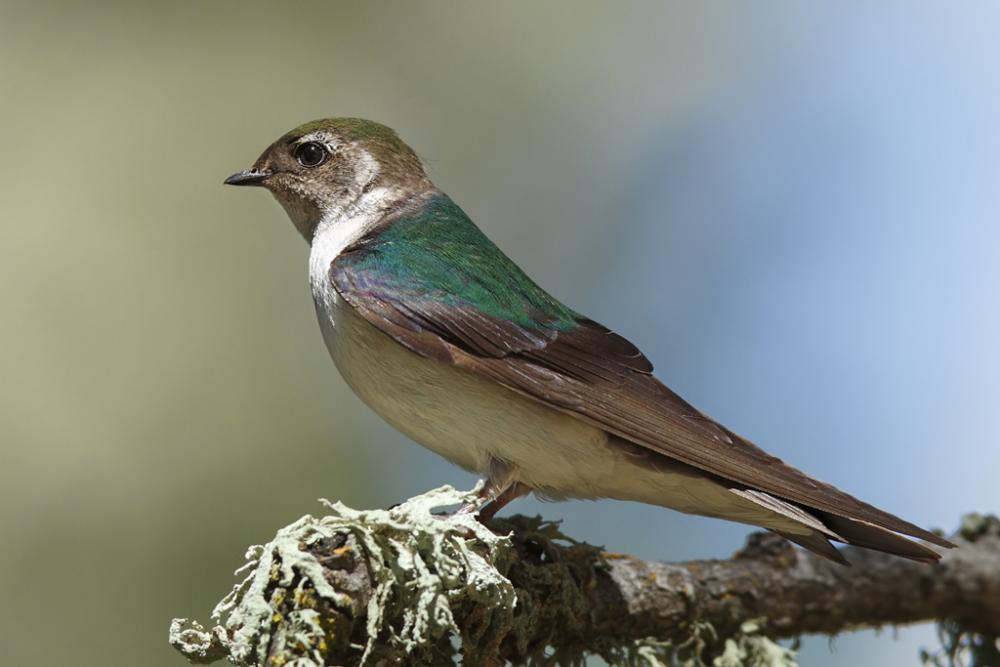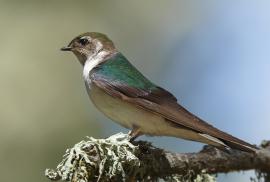Guide to Boreal Birds
Overview
Like many other swallows, the Violet-green lives in colonies, basically because of its feeding needs. Where one finds food there is usually enough for all, and when feeding communally these birds can more readily detect and defend themselves from hawks.
Description
5-5 1/2" (13-14 cm). Dark, metallic, bronze-green upperparts; iridescent violet rump and tail, the latter slightly forked; white underparts. White cheek extending above eye and white on sides of rump distinguish it from Tree Swallow.
Voice
A high dee-chip given in flight. Also a series of varying tweet notes.
Nesting
4 or 5 white eggs in a grass-and-feather nest in a woodpecker hole, a natural cavity, under the eaves of a building, or in a nest box.
Habitat
Breeds in forests, wooded foothills, mountains, suburban areas.
Range/Migration
Swallows and swifts migrate during the day, feeding on the wing as they move to or from their breeding areas. Violet-green Swallows are relatively early spring migrants that tend to follow the coastline or low-elevation features as they travel. Cold snaps that depress insect flight can stall migration; prolonged cold weather can be fatal to swallows, particularly in the Cascade Range, where this species may appear as early as the first week of February. The early migration of this species may be related to the intense competition for nest sites, which are usually tree holes.
Breeds from Alaska east to South Dakota, south to southern California and Texas. Winters mainly south of U.S.-Mexico border, but a few winter in southern California.



